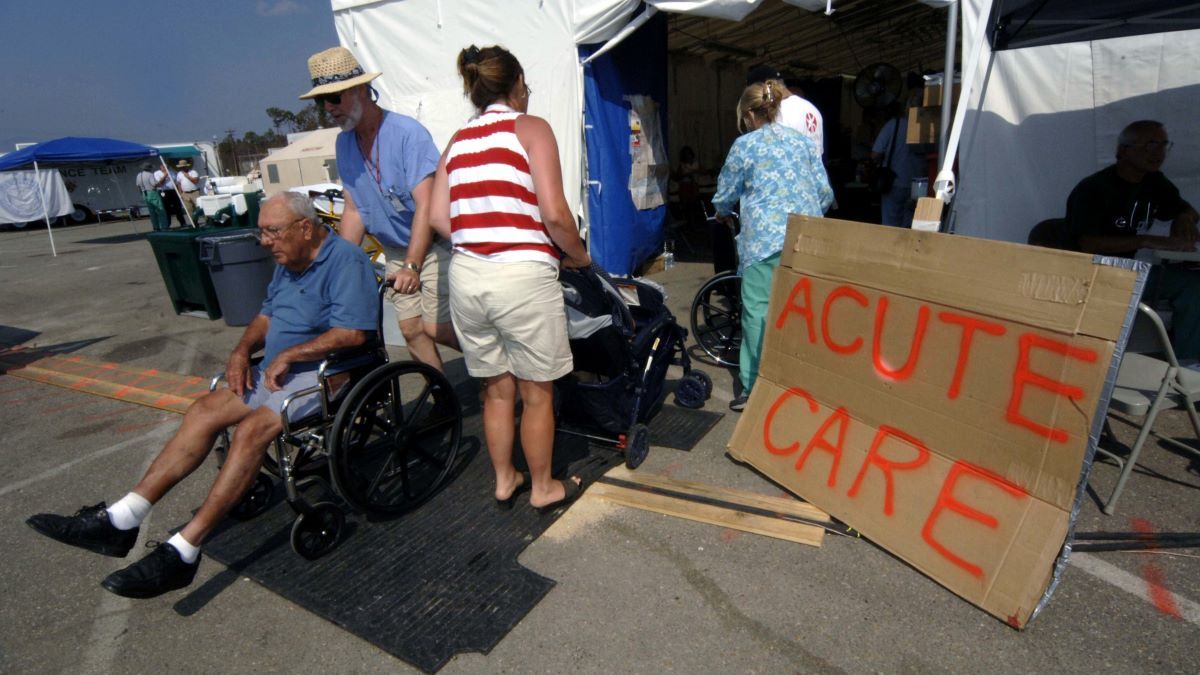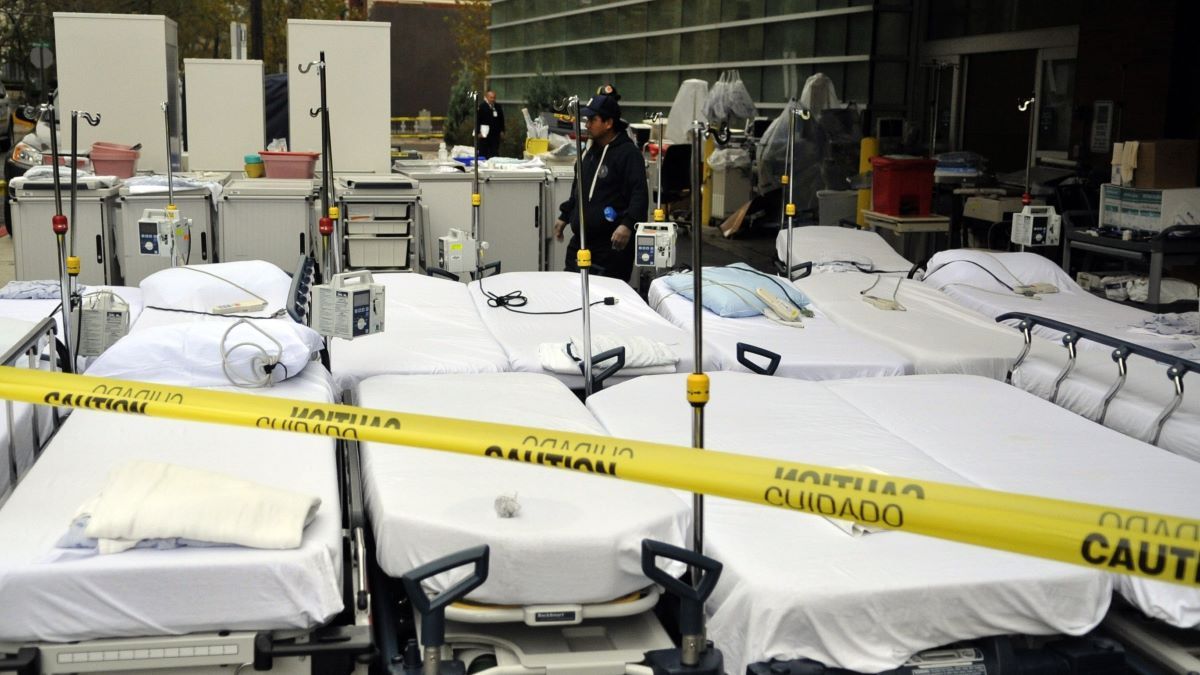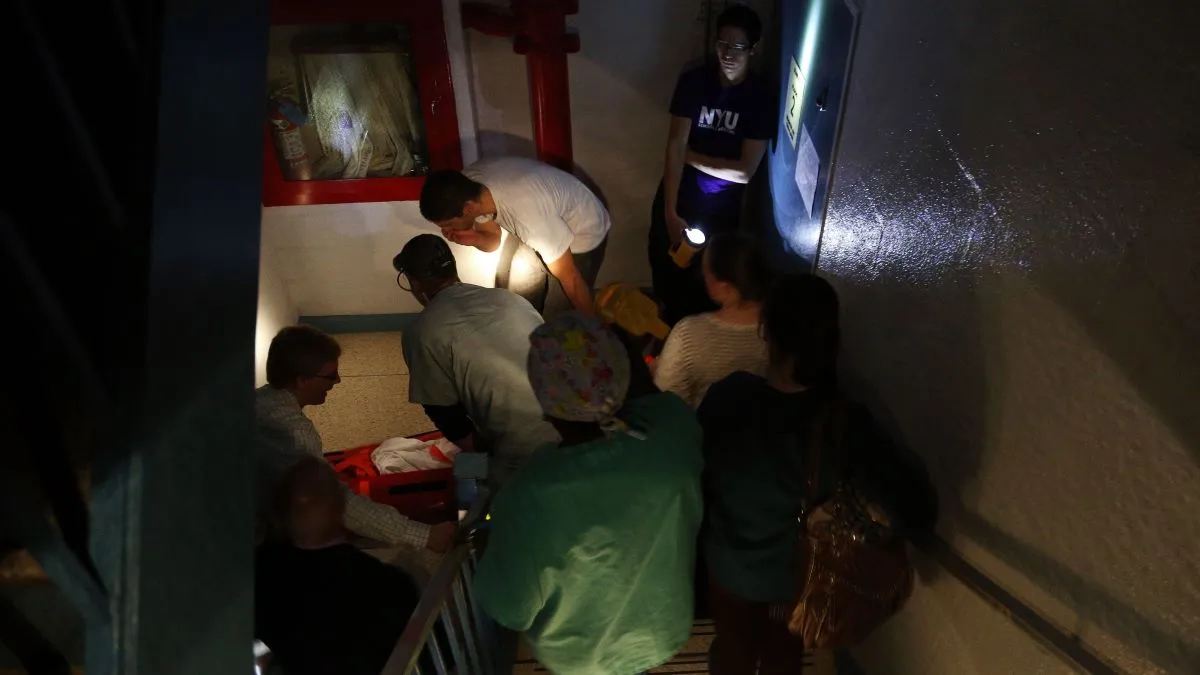Climate change could take a toll on health systems.
More frequent and intense heat waves, heavier rainfall and flooding, a more extreme hurricane season — as weather events exacerbated by climate change ramp up in frequency, hospitals could see a surge of patients.
But extreme weather also poses a risk to hospital operations, threatening to leave communities without access to care in an emergency. From 2000 to 2017 alone, hospitals were forced to evacuate patients 114 times due to natural disasters like hurricanes, wildfires, floods and storms, according to one study.
U.S. hospitals have struggled during extreme weather events. Hurricane Sandy, which hit the East Coast more than a decade ago, infamously strained hospital resources, and an analysis published in 2018 found one-third of the deaths reported in the wake of Hurricane Maria in Puerto Rico were attributed to delayed or interrupted healthcare.
Climate resilience planning, where facilities prepare to adapt and respond to climate-related disruptions, is critical to keep facilities open in the midst of a disaster, experts say.
But industry-wide financial and workforce challenges, uncertainty around future climate events and health systems’ growing geographic footprints make that crucial preparation a challenge.
“I think people have traditionally assumed that the hospital will be open, the hospital will be there for them in the disaster,” said Paul Biddinger, chief preparedness and continuity officer at Mass General Brigham and director of the emergency preparedness research, evaluation and practice program at the Harvard T. H. Chan School of Public Health. “And we have seen many times that that isn't true.”
Natural disasters are the most common cause behind hospital evacuations
Planning challenges at growing health systems
One of the biggest challenges for health systems is gaining access to data about the effects of climate change, particularly in their locales, Biddinger said.
Currently, the federal government recommends five elements for healthcare climate resilience plans, starting with a prospective risk assessment that uses forward-looking climate data to prepare for current and future vulnerabilities.
Hospitals typically use historic data to build out hazard vulnerability analyses, where they review potential threats like mass casualty events, power outages or severe weather that could affect their facilities or communities.
But past events don’t necessarily predict the future in a world with a changing climate.
“We know we will have more severe storms, more precipitation, more heat waves, etc. But knowing that in broad strokes doesn't really help you, if you don't know for sure whether your hospital is at dramatically increased risk of flooding, and therefore might need to evacuate,” Biddinger said. “You don't know specifically for your communities where roads might be flooded, and people might not be able to access your hospital.”

That’s one area where federal or state governments could provide more specific projections and maps of impacted areas, he said. Data-sharing partnerships with academic institutions, cities, towns and other key infrastructure could also help hospitals.
For example, the city of Chicago, alongside volunteers in 17 other communities across the country, mapped urban heat islands this summer as part of an initiative by the National Oceanic and Atmospheric Administration.
That granular data could help local hospitals target community outreach during extreme heat days, as some areas of the city face worse conditions due to less tree cover or more concrete and steel infrastructure near their homes, said Ian Hughes, sustainability manager at Chicago-based Rush University Medical Center.
But health systems will still need to appreciate that some climate events will be difficult to predict, said Seema Wadhwa, executive director of environmental stewardship at Oakland, California-based Kaiser Permanente.
“Until earlier this year, I often used to say, climate change looks and acts differently in different parts of the country,” Wadhwa said. “And I would note the fact that, here on the East Coast, I'm not really worried about wildfires. But that world is changing.”
Another challenge for resilience planning is the large size of many health systems.
“Unfortunately, the pandemic helped us practice emergency response in ways we never thought we’d have to.”

Shelly Schlenker
Chief advocacy officer, CommonSpirit Health
Healthcare operators can span multiple regions with different climate impacts and social vulnerabilities among their patient populations, said Emmie Mediate, director of the U.S. climate and health program at nonprofit Health Care Without Harm.
“Oftentimes, these resilience plans are developed at the system level, but they have to be flexible enough and they have to include all of the different facilities in each different geography and community to make sure that we're accommodating for region-specific climate resilience and those different needs. And that's hard to do,” Mediate said.
High costs amid financial struggles
As climate change resilience planning becomes an operational imperative for health systems, hospitals are still recovering from the COVID-19 pandemic, which strained their finances and workforces.
Labor shortages and rising expenses pummeled hospitals’ operating margins in 2022, and — though margins have improved for some health systems this year — higher costs and staffing shortages will continue to challenge nonprofit providers through 2024, according to Fitch Ratings.
“The other challenge coming out of the pandemic is the financial challenges all health systems are facing right now in our recovery period. It means there are less dollars available,” said Shelly Schlenker, chief advocacy officer at Chicago-based CommonSpirit Health. “So you have to be creative in how you approach what you're doing.”

Updating hospital buildings to withstand more severe weather is one financial burden facing hospitals.
Many current building codes don’t adequately account for climate change, and hospital infrastructure is often used for many years, said Mass General Brigham’s Biddinger.
Biddinger’s health system identified more than $300 million worth of capital improvements for climate vulnerabilities in 2015.
Health systems likely won’t be able to afford those upgrades in the short term, so they should focus on ensuring new construction is climate resilient, and prioritize improving buildings where they provide key services, like emergency or intensive care, he said.
Providers should also look to the community and see where partnerships are possible, like working with local governments to shore up facilities that are nearby other key infrastructure, like electrical.
“This is expensive, this can't be addressed overnight,” Biddinger said. “But we should know that people are aware of the risks and trying to take action, and it shouldn't be acceptable to not be working on this as a major challenge to the delivery of healthcare.”
CommonSpirit is one health system trying to infuse climate resilience planning into required emergency response preparedness plans, Schlenker said.
Although the pandemic stressed hospitals, it also served as a reminder that hospital preparedness can make a difference when disasters strike, she said.
“Unfortunately, the pandemic helped us practice emergency response in ways we never thought we'd have to,” Schlenker said. “But what it showed us is that the type of planning we do on a regular basis, and the drills we do, make a difference.”





















